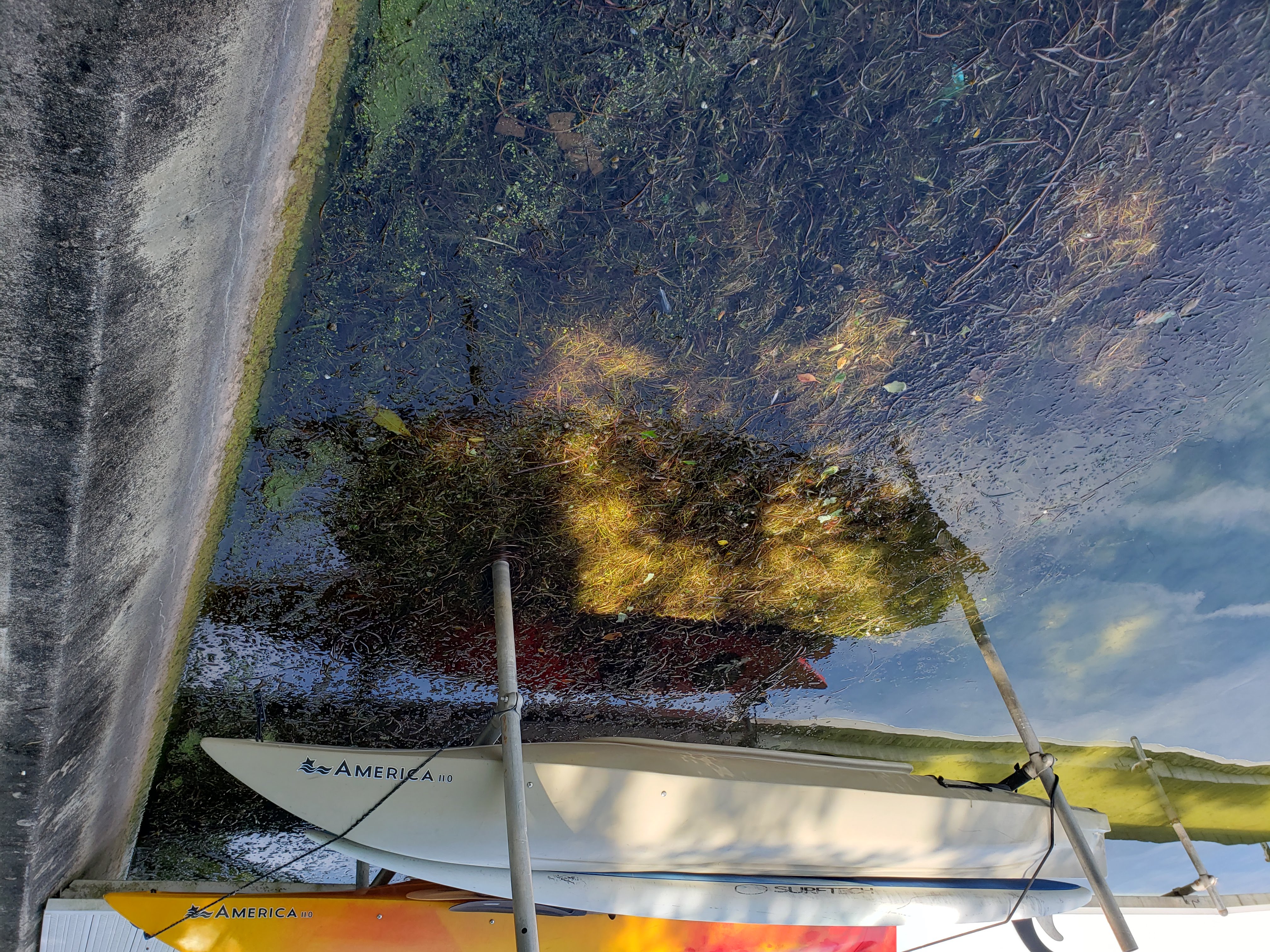What's up with the weeds?
August 25, 2020
We sometimes hear questions or concerns from several sources at the same time about current conservancy or environmental topics in the Clear Lake Township.
This periodic short column allows Conservancy Executive Director Bridget Harrison to give all of us the same answer at the same time. If you have or hear such questions or concerns, let Bridget know by email bridget.harrison@clearlakeconservancy.org or phone call, (260) 527-1072. Also, help us by spreading the word about this source of reliable and timely information about community and environmental questions in the Clear Lake Watershed.
Q: Diane from the North Shore and Bill from the South Shore ask: We have noticed an excessive amount of plant growth in the lake and floating weeds along our seawalls this year. What are we seeing and what can be done about it?
A.: Bridget: In response to recent reports from several lake homeowners, we started investigating the increased presence of plant life and floating plant debris in Clear Lake. A drone was flown and collected some very striking images. Many thanks to Connor Oiler!



Following that, members of our volunteer Water Quality Committee collected a sample and shipped it to Dr. Robin Scribailo at Purdue University. He confirmed the presence of invasive and non-native, Eurasian Watermilfoil.


Eurasian Watermilfoil (EWM), Myriophyllum spicatum, is native to Europe and Asia and was first documented in the United States in the early 1900's. It was first observed in Clear Lake in 1996. The few reported plants were eradicated at that time. The plant’s presence was documented again in a vegetative survey completed by the Conservancy in 2014. No control methods were recommended at that time.
Eurasian Watermilfoil has thin stems that appear green, brown, or pinkish white. The stems can grow ~3 to 10 feet tall. They typically have four feather-like, deeply dissected leaves that are whorled around the stem.

As EWM becomes established in a lake, it causes issues for the ecosystem and for recreation. We’ve heard from residents, sailors, anglers, boaters, kayakers, and swimmers that increased plant growth has been problematic this summer. Its ability to reproduce through stem fragmentation and underground runners gives it a unique advantage. A single stem fragment (broken off typically from boat activity) can take root and form a new colony. Locally, the colony spreads by spreading shoots underground. EWM typically spreads from waterbody to waterbody from unwashed boats and boating equipment. In water bodies with native plants, EWM is found to be less prevalent. When native plants are removed, EWM can move in to fill the void.
What is the Conservancy doing?
To fight this invasive plant, we will apply for funding to get an updated aquatic vegetative survey to understand the location and level of infestation. Following that, funding applications will be made for treatment and control. Details will be shared on our website as we learn more. Thanks to everyone who has brought this to our attention.
What can you do?
Because EWM spreads by fragmentation, avoid fragmenting the plant! If you must rake and remove plants, make sure you remove the small floating pieces. If your seawall has large mats of floating plant debris consider removing that plant debris.

Disposal is key! Plant debris can be used as compost in your landscaping or garden. If that is not an option for you, take the material to the drop-off location off of SR 120, near the Fremont Water Treatment Facility. Do not “dump” any plant material in the deep pockets of the lake.
There will always be “weeds” in a healthy lake. As suggested earlier, lake residents can maintain a healthy, native plant community. Native plants do not typically form thick mats like EWM and therefore create fewer issues for recreation.
We can all help to minimize possible inputs of plant food or nutrients like phosphorous and nitrogen with careful and cautious application to our properties. Test soil for chemical need, follow the recommended application rate, and be mindful of the weather over the next 24-48 hours. Many landowners recognize that applying chemicals with rain in the forecast is like flushing money down the toilet—or in this case, into the lake.
Several additional plant control recommendations are summarized in this guide from the Indiana Department of Natural Restoration: https://www.in.gov/dnr/files/Managing_Aquatic_Plants_Indiana_Lakes_2000.pdf
Permitting may be required for some plant removal activities.
Clear, clean water is one of the Conservancy’s ultimate goals, but it’s a complex endeavor. Thanks for your interest in improving water quality because it is a community effort.
